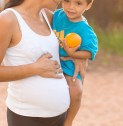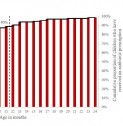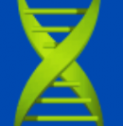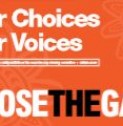Thérèse Kearns
Honorary fellow
Qualifications:
PhD, Menzies School of Health Research, Charles Darwin University, 2014; Master of Applied Epidemiology, Australian National University, 2002; Graduate Diploma Community Health Nursing, University of South Australia, 1996;Graduate Certificate Child, Adolescent and Family Health Nursing, Flinders University, 1993; Registered Midwife, Mater Misericordiae Mothers' Hospital, 1991; Registered Nurse, Wimmera Base Hospital, 1989; Certificate IV Training and Assessment (TAE40110), Australian College of Training and Employment, 2011.
Approved level of HDR supervision at Charles Darwin University:
Principal Supervisor for PhD
Location:
Biography:
Thérèse, more commonly known as TK, has been at Menzies since 2006 and is currently employed in the Tropical and Global Health and Education Division.
TK has over 15 years of experience working in rural and remote Aboriginal communities in WA and NT as a nurse/midwife and epidemiologist. Her research projects have predominantly been in population and public health areas for neglected tropical diseases (scabies, strongyloidiasis and lymphatic filarisis), streptococcal infections, intestinal parasites, maternal and childhood anaemia, disease surveillance and mass drug administrations. TK has built strong relationships in East Arnhem and the Katherine region and is actively engaged in community consultations for the development and design of new projects and research translation of project results. She lectures in the Masters of Public Health and supervises PhD and Masters students.
TK has contributed to successful grants attracting over $3 million in project funding and $500 000 in scholarship/fellowship funds.
Research Themes
- Anaemia
- Indigenous health
- Skin disease
- Parasitic diseases
Current projects:
- Anaemia Evaluation
- Queensland better cardiac care data-linkage project
- MESCH evaluation
- SAMELFS - Samoan elimination of lymphatic filarisis and scabies
Past projects:
- Ivermectin MDA: beating scabies and strongyloidiasis in a remote Aboriginal community in the Northern Territory
- Childhood anaemia - knowledge and resource development project
- East Arnhem Healthy Skin Project
- Beating scabies and strongyloides in Galiwin'ku
- Full Moon Strategy Evaluation Central Australia
- Parental perspectives on what is needed, from pregnancy through to age 5 years, for children to grow strong and healthy
- Strongyloidiasis, Scabies and Impetigo – Household Clustering in a Northern Territory Community
- Matched case control study to determine the burden strongyloidiasis has on remote Aboriginal Primary Health Care Service
- Prevalence of scabies and strongyloidiasis five years after two mass drug administrations in a remote Australian Aboriginal community.
- New approaches to improve nutrition in Aboriginal Yolgnu children
- Cuningham W, McVernon J, Lydeamore MJ, Andrews RM, Carapetis J, Kearns T, Clucas D, Dhurrkay RG, Tong SYC, Campbell PT. (2019) High burden of infectious disease and antibiotic use in early life in Australian Aboriginal communities. Aust N Z J Public Health. 2019 Apr;43(2):149-155. doi: 10.1111/1753-6405.12876. Epub 2019 Feb 6.
- Shield JM, Kearns TM, Garŋgulkpuy J, Walpulay L, Gundjirryirr R, Bundhala L, Djarpanbuluwuy V, Andrews RM, Judd J. (2018) Cross-Cultural, Aboriginal Language, Discovery Education for Health Literacy and Informed Consent in a Remote Aboriginal Community in the Northern Territory, Australia.Trop Med Infect Dis. 2018 Jan 29;3(1). pii: E15. doi: 10.3390/tropicalmed3010015.
- Aung PTZ, Cuningham W, Hwang K, Andrews RM, Carapetis JR, Kearns T, Clucas D, McVernon J, Simpson JA, Tong SYC, Campbell PT. (2018) Scabies and risk of skin sores in remote Australian Aboriginal communities: A self-controlled case series study. PLoS Negl Trop Dis. 2018 Jul 25;12(7):e0006668. doi: 10.1371/journal.pntd.0006668. eCollection 2018 Jul.
- Tonkin E, Kennedy D, Golley R, Byrne R, Rohit A, Kearns T, Hanieh S, Biggs BA, Brimblecombe J. (2019) The Relative Validity of the Menzies Remote Short-Item Dietary Assessment Tool (MRSDAT) in Aboriginal Australian Children Aged 6⁻36 Months. Nutrients. 2018 May 10;10(5). pii: E590. doi: 10.3390/nu10050590.
- Lydeamore MJ, Campbell PT, Cuningham W, Andrews RM, Kearns T, Clucas D, Gundjirryirr Dhurrkay R, Carapetis J, Tong SYC, McCaw JM, McVernon J. (2018) Calculation of the age of the first infection for skin sores and scabies in five remote communities in northern Australia. Epidemiol Infect. 2018 Jul;146(9):1194-1201. doi: 10.1017/S0950268818001061. Epub 2018 May 8.
- Holt, D.C., Shield, J., Harris, T.M., Mounsey, K.E., Aland, K., McCarthy, J.S., Currie, B.J., Kearns, T.M. (2017) Soil-Transmitted Helminths in Children in a Remote Aboriginal Community in the Northern Territory: Hookworm is Rare but Strongyloides stercoralis and Trichuris trichiura Persist. Trop. Med. Infect. Dis. 2, 51.
- Kearns, T.M., Currie, B.J., Cheng, A.C., McCarthy, J., Carapetis, J.R., Holt, D.C., et al. (2017) Strongyloides seroprevalence before and after an ivermectin mass drug administration in a remote Australian Aboriginal community. PLoS Negl Trop Dis. 11(5):e0005607. Epub 2017/05/16. doi: 10.1371/journal.pntd.0005607. PubMed PMID: 28505198.
- Kearns T, Ward F, Puszka S, Gundjirryirr R, Moss B, Bailie R. (2017) Anaemia Health Literacy of Community Members and Health Practitioners Knowledge of Best Practice Guidelines in a Remote Australian Aboriginal Community. Universal Journal of Public Health, 5(1):32-9. doi: 10.13189/ujph.2017.050105.
- Kearns, T. M., et al. (2015). "Impact of an Ivermectin Mass Drug Administration on Scabies Prevalence in a Remote Australian Aboriginal Community." PLoS Negl Trop Dis 9(10): e0004151
- Liberato, S., Kearns, T., Ward, F. & Brimblecombe, J. (2015). Is electronic visual recording feasible in supporting assessment of dietary intake of Australian children living in remote communities? Aust NZ J Public Health. Online.
Click here to view more Therese Kearns publications in PubMed.
-
Impact of maternal anaemia in pregnancy on childhood anaemia discovered
A study investigating the impact of maternal anemia in pregnancy on infant anemia has found it to be a more significant risk factor than being born premature or low birth weight (LBW).
-

Media release | Impact of maternal anaemia in pregnancy on childhood anaemia discovered
A study investigating the impact of maternal anaemia in pregnancy on infant anaemia has found it to be a more significant risk factor than being born premature or low birth weight (LBW).
-
Antibiotic use in remote communities contributing to the burden of disease
The study, Antibiotic use for Australian Aboriginal children in three remote Northern Territory communities, was recently published in the journal PLOS
-

Antibiotic use in remote communities contributing to the burden of disease
A study of antibiotic prescription rates for Aboriginal children in remote communities in the Northern Territory (NT) has identified high rates of infections and antibiotic use in these communities.
-
Lowitja Institute Report | Anaemia Prevention Program, Katherine East
An Anaemia Prevention Program has been running in three communities serviced by Sunrise Health in East Katherine region in the Northern Territory (NT)
-

2018 Indigenous Men’s Conference and 2018 Indigenous Women’s Wellbeing Conference in Cairns QLD Australia.
The stage is set to accommodate all delegations of the 2018 Indigenous Men’s Conference and 2018 Indigenous Women’s Wellbeing Conference scheduled on the 13th – 15th of June 2018 at the Pullman Cairns International Hotel.
-

NT communities' anaemia management evaluated
Evaluation of anaemia management in three remote Indigenous communities in the Katherine East region, NT Health practitioners in the remote Katherine East region are not sure why anaemia in young children is so common in Indigenous communities. What they...
-

Scabies and strongyloides: a community snapshot
Researcher Therese Kearns tests a new treatment for mite and worm infections.
-

ABC stateline report - beating scabies and strongyloidiasis
The Menzies School of Health Research is hoping the drug Ivermectin will rid the Echo Island community, east of Darwin, of scabies and the strongyloides worm.




